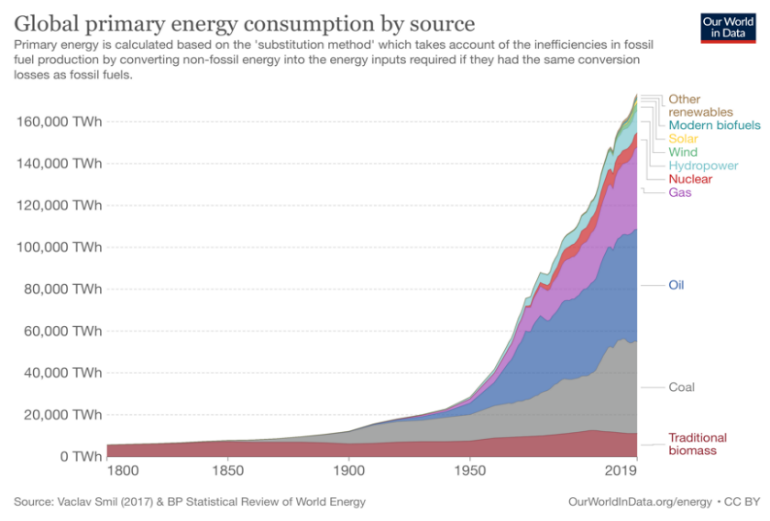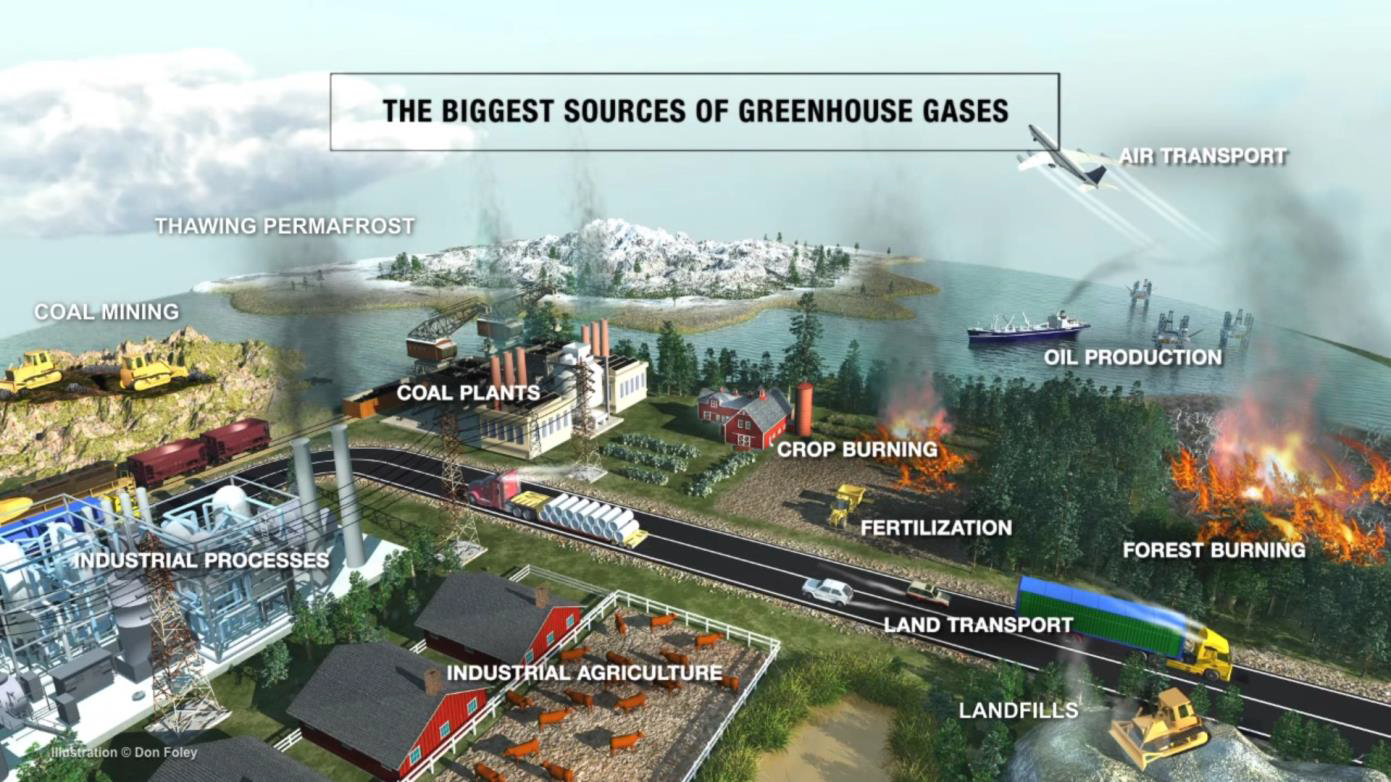Global Consumption of Fossil Fuels
Revised 2 December 2023
Economic growth has been possible due to the exploration, mining, and drilling of fossil fuels (Hall & Klitgaard 2018). As much fossil fuel energy used from 1800 until 1990, a period of 190 years, was used over a 30-year period from 1990 until 2020. Advocates of economic growth currently target a continued economic growth rate of 3% per year. This exponential rate of growth would require the use of as much energy as has been used since 1800 until 2021 over the next 24 years.

Figure 1: Global Consumption of Fossil Fuels (Our World in Data 2021)
The increase in the rate of population growth from the 1950s to the 1970s was enabled by the green agricultural revolution when traditional farming practices were replaced by artificial fertilisers, pesticides, and farm machinery. In 1971, Howard Odum pointed out that people were effectively eating oil as a result of the green agricultural revolution. This is even more so the case today with subsequent increases in the lengths of supply chains from the farm gate to the plate of each consumer due to the increase in globalisation of food production.

Figure 2: Industrialisation of Food Production
It is now well established and accepted by most that climate change is a reality due to the emissions of greenhouse gas emissions (Myers et al. 2021). There are many different sources of greenhouse gas emissions as shown in Figure 14. Most of these emissions are the result of burning fossil fuels.

Figure 3: The Biggest Sources of Greenhouse Gases (Climate Reality Project 2019)